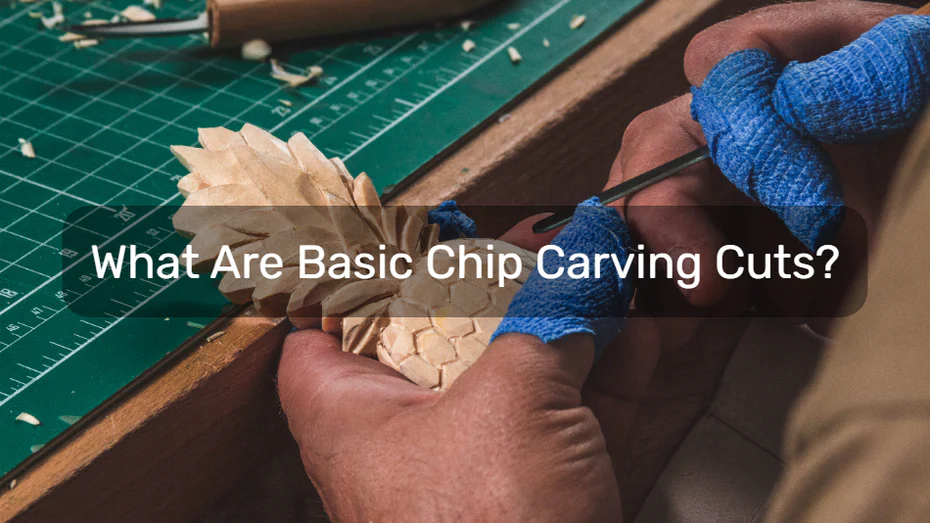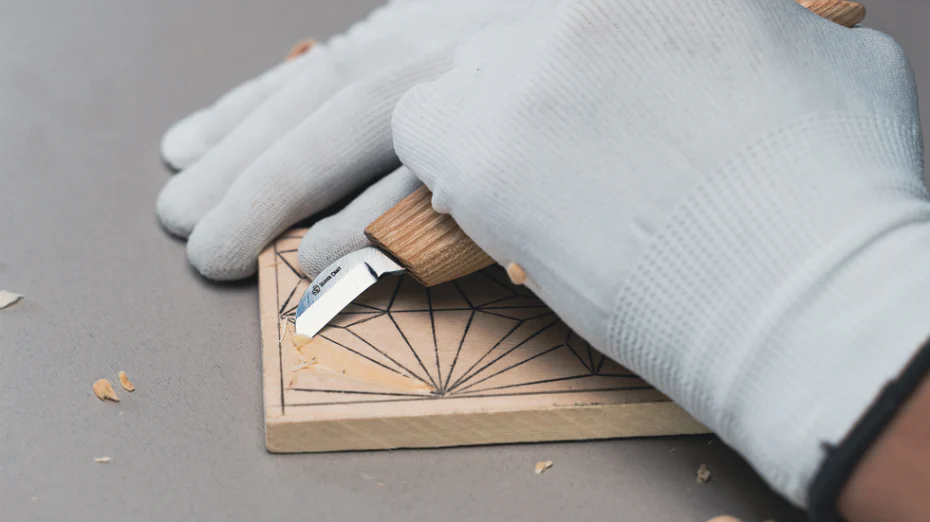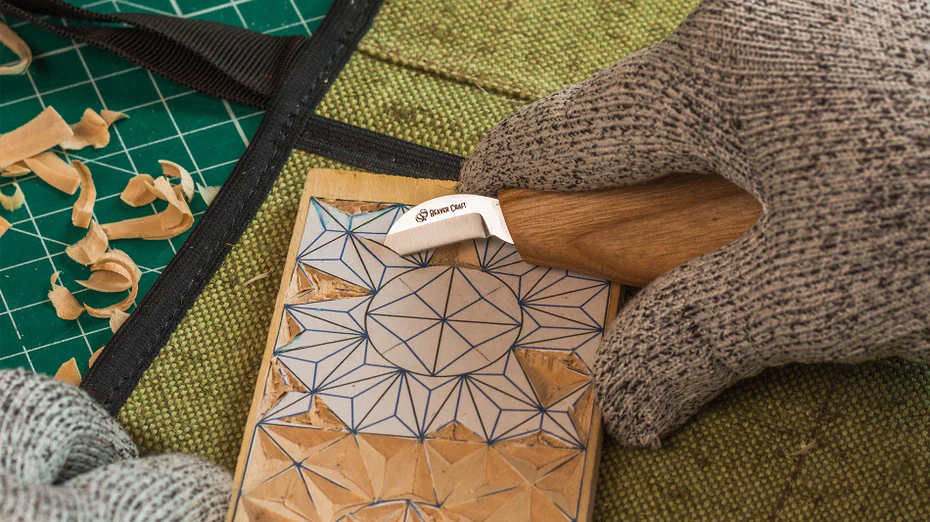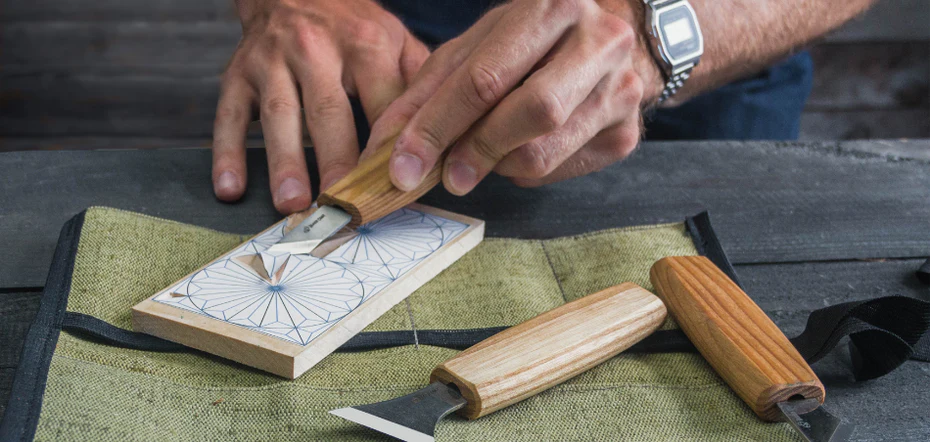What Are Basic Chip Carving Cuts? | BC Learning Series #17

In the world of wood carving, chip carving is very similar to relief carving. Both methods entail working on flat wooden surfaces that remain consistent in size throughout the job, rather than being altered through whittling or carving. Similar to relief carving, chip carving involves removing sections of the original wood slab or panel to create a three-dimensional impression, resulting in highly decorative sculptures.
What is Chip Carving?
Chip carving is one among the greatest ways for beginners to get engaged in the art of wood handing. Basically, this style implies removing small pieces of the material (chips), creating amazing ornamental patterns in a single piece using a chip carving knife. Chip carvings have its structure, two levels: a flat wooden surface itself and another surface beneath, let’s call it the extreme point of your carving, where the cuts meet.
This wood carving style can be traced back to ancient years when pieces of wood were first grasped creatively. Through the years many cultures inherited this tradition and transformed their perception of the world.
Nowadays everyone has an opportunity to gain such an experience by mastering various techniques. They include free form style carving or following some basic geometric figures and shapes, such as simple lines and curves, triangles, circles, and ovals. The great thing of learning simple rules is that they can be broken sooner so that one could get inexhaustible opportunities to incarnate personal ideas and visions in the project, making it interesting and unique.
Let’s consider two main techniques one can master to start the way of a chip-carver.
Fine Triangle Chip Carving

The most commonly used traditional pattern. Being simple to understand and easy to perform, this technique is very popular among the beginner carvers. Essentially it means carving various triangles. The awesome thing about this type of chip carving is that it’s quite simple to carve those shapes automatically, but it doesn’t necessarily mean that the final result will be boring. Changing and combining different sorts of triangles can let a carver create a wonderful pattern even with repeatedly projected outlines.
Free-form Chip Carving

Do basic shapes still seem to be too boring? So a typical basic scheme can always be broken and transformed the work to essentially extraordinary. While those triangles can keep the and images attached to some defined movements, free-form chip carving gives a great variety of lines, curves, circles, which could easily implement everything that keeps itself within the triangle-shaped bounds.
Anyway, those techniques can be combined to supply an artist with all the necessary stuff to embody his ideas.
Cutting Rules for Chip Carving

This detailed list provides helpful insights about cutting with the grain, removing chips, and avoiding typical errors such as undercutting. Whether you're an experienced woodworker or a newbie enthusiast, these principles will help you create beautifully detailed and aesthetically pleasing sculptures using the age-old process of chip carving.
- Cut with the grain to prevent tearing, as cutting against the grain may cause damage along the cut line due to the long wood fibers.
- Avoid cutting too deeply; limit the depth to about 1/8, adjusting for smaller chips.
- Remove large chips gradually, especially if a nearby section has already been carved. This helps prevent wood deflection towards the freshly cut edge.
- Cut away from a previously carved chip to avoid a wedging action that could dislodge intended design elements.
- If the chip is next to carving, remove the complete line of the pattern. Start by staying back from the line when removing the first chip, then cut the adjacent chip while also staying back from the line. Make finishing cuts on both sides to maintain straight lines over multiple chips.
- Avoid undercutting; visualize the blade's point and prevent leaving score marks at the cut's base. Remove progressively larger chips instead of attempting to remove the entire chip at once. Do not pry chips out; wriggle them to identify points of attachment.
- To address undercuts, use the dull side of the blade at the same angle as the cut. Gently draw the blade along the length of the cut, rotating the work 180° and repeating the process in the opposite direction. The goal is a fine undercut, not to create pressed wood decorations. This method is not intended for erasing unintended slips.
- Before using the stabbing knife, remove the pattern line with the primary knife. Press the stabbing knife into the cut line to leave black ink at the bottom of the depression.
Best Chip Carving Tools

Each wonder comes from a different magic wand. Chip carved wooden magic also requires specialized tools. They don’t demand too much money and any starting skills, which makes chip carving quite affordable. But here you have an immense number of different wood carving tools for sale, so you need to choose a special one. So how could you select the best chip carving knife?
Among the top rated wood carving tools, the BeaverCraft Chip Carving knife C2 is a finely-crafted product from some talented Ukrainian makers at BeaverCraft. The sharp edge is attached to the oiled wood handle, which polished surface gleams and keeps its gloss and shine even after long-term usage. Its size is also the greatest chops for chip and relief carving and wood cutting.
The laminated steel blade is razor-sharp out of the box, so the tool isn’t expected to be provided with extra pre-usage care. Sooner it will be easy to recover the sharpness with a barber’s stone or a strop. Such an edge is suitable for cutting hardwoods such as walnut and oak, as well as softwoods. As a result, the cuts are shiny and smooth. The thin pointed tip of the knife is appropriate for delicate and detailed wood carving.

